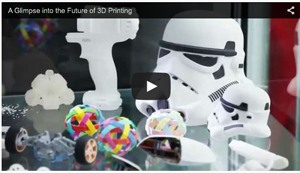 As an educator, you’re already aware that students learn more effectively through practice and hands on experience – 3D printing offers a whole new approach to learning that will enhance students’ interaction with technology and introduce them to a world of experimentation and innovation in the classroom.
As an educator, you’re already aware that students learn more effectively through practice and hands on experience – 3D printing offers a whole new approach to learning that will enhance students’ interaction with technology and introduce them to a world of experimentation and innovation in the classroom.
Why should your education institution consider 3D printing technology?
- 3D printing will have a positive impact on the environment
- Students can learn skills that are fundamental in a technology age
- Positive behaviours such as teamwork and co-creation are developed
Watch our latest video: A Glimpse into the Future of 3D Printing >>
“You need to get involved and participate in the revolution and help shape it!” days Steve Sammartino, acclaimed author of The Great Fragmentation and expert on the digital revolution.
Konica Minolta is passionate about the future of 3D printing. Contact us to find out how we can help you plan your approach, and take the next step towards adoption of this exciting technology.


Latest posts by Education Technology Solutions (see all)
- Network Technologies Driving Sustainability for Education and Hospitality in 2025 - May 6, 2025
- Keypath Education Launches AI-enabled Short Course Platform to Drive Career Progression for busy Professionals - February 19, 2025
- Lumify Work Partners with AI CERTs™ to Bring Cutting-Edge AI Certifications to ANZ & PH - February 5, 2025


Recent Comments
[…] Learn More: Education Technology Solutions […]
[…] The Padagogy Wheel […]
[…] the new reality in the digital environment has compelled websites for schools to change in form. Mal Lee has identified two types of school
[…] (A list of possible interactive activities is available in a companion article “Is your school ready for an LMS? – The Course Design Continuum
[…] How Technology in the Classroom Is Shaping the Future of … […]